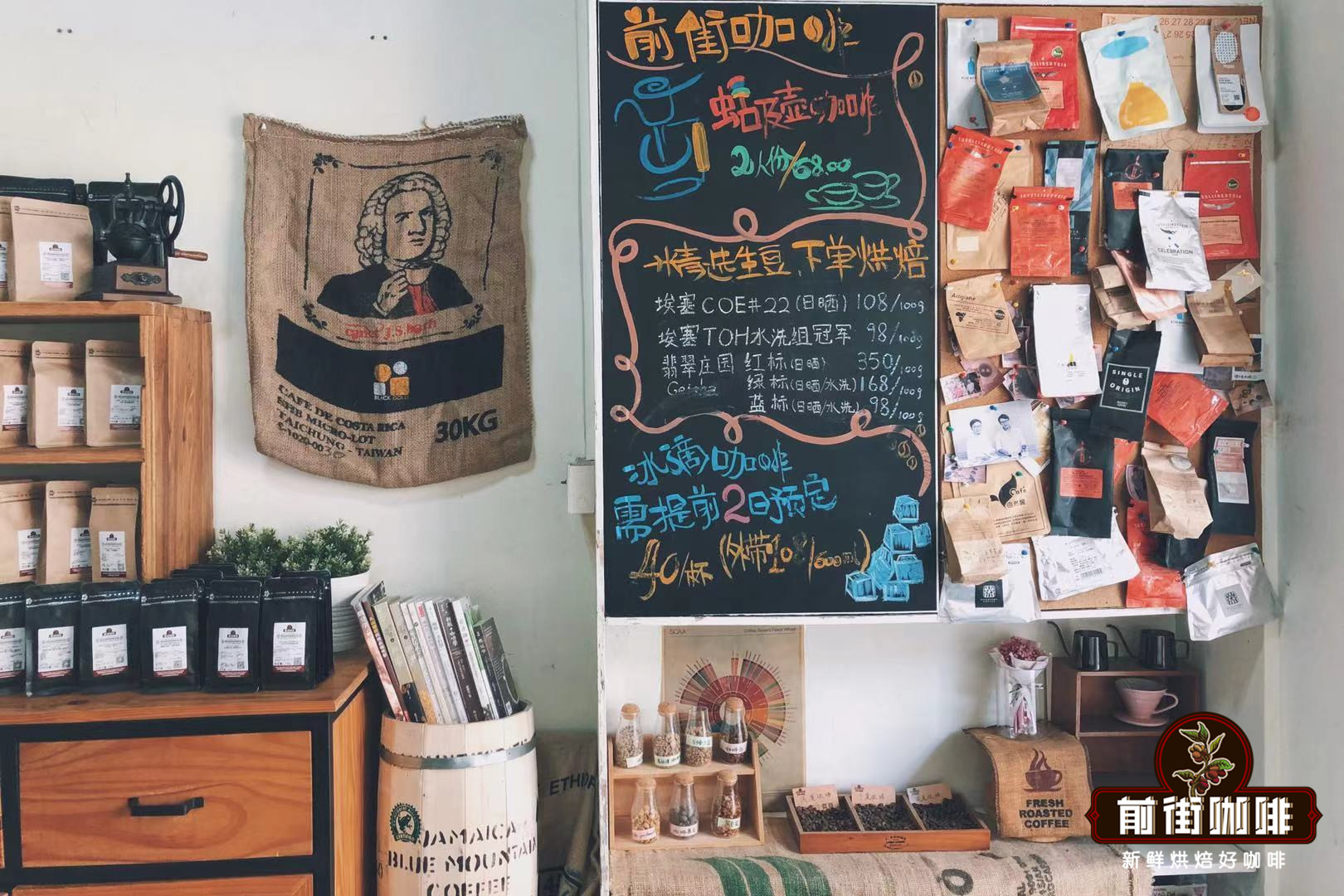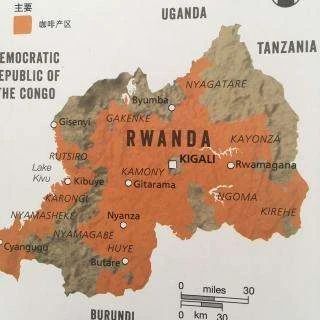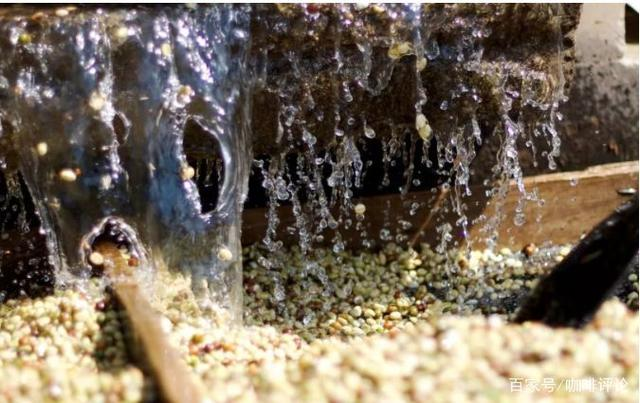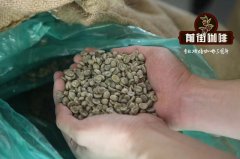Flavor characteristics of Rwandan coffee beans "the country of a thousand hills" the story characteristics of Rwandan coffee beans

For more boutique coffee beans, please add private Qianjie coffee on Wechat. WeChat account: kaixinguoguo0925
Every coffee in the front street has a story, and we are happy to share the story behind each coffee bean, feeling that this is the point of drinking coffee. It's not just a cup of coffee that tastes good, but also listen to the stories behind it and feel their experiences. Only in this way can you know that every cup of coffee is not easy. Next to share the story of this bean is sour one day, for you to taste the life of this hundred tastes!

Rwandan coffee is the most popular African coffee after Kenya and Ethiopia. But unlike the two famous countries, it does not have a long history of planting, let alone native varieties everywhere in the wild. This small African country is a fire Phoenix that has been reborn after robbery.
Rwanda is one of the smallest and most densely populated countries in Africa, with an area the size of Maryland. In this country, the average area of all family farms is less than one hectare. The coffee industry in Rwanda is actually a small-scale peasant economy. Today, about 430000 households produce coffee in Rwanda, and most farms have fewer than 200 coffee trees.

Rwanda has an ideal environment for Arabica coffee, which is grown between 1350m and 1850m above sea level. Rwanda's fertile volcanic soil, abundant rainfall and mild climate throughout the year all promote the ripening of coffee beans, and the special planting environment gives coffee a unique flavor. Rwandan coffee basically does not use chemical fertilizers or pesticides. The fertilizer in the soil comes from the natural mulch on the ground, as well as the traditional fertilization method.
Rwanda (Rwanda), known as the Land of a Thousand Hills, sits above the equator and is surrounded by East African States such as Congo, Uganda, Tanzania and Burundi. Geographically, it has suitable conditions for growing coffee, but since it was introduced by German missionaries in 1904, Rwandan coffee has been poorly handled commercial grade, most of which have been exported to the sovereign country of Belgium. The promotion of boutique coffee production began only after the ravages of war and after the economy got back on track.
The genocide (Genocide), which occurred in 1994, killed more than 1 million people, most of them Tutsi (Tutsi). So far, there are orphans who survived that year, memorial halls that can be seen everywhere, and war criminals who account for 90% of the total number of prisoners in the streets of Rwanda. Since 2001, the Government of Rwanda has established NAEB (National Agriculture Export Development Board), which focuses on promoting coffee exports and earning foreign exchange.
With the support of the government, farmers have changed from rough home treatment to transporting freshly harvested fruit to a nearby water washing station (Coffee Washing Station) for full washing treatment. In a short period of 12 years, the number of washing stations across the country has increased from two to 220. It is now all private, that is, owned by exporters or farmers' cooperatives. Due to the small average area of farmland (less than 200 coffee trees per farm), about 50 to 100 farms are served at each station. NAEB employs 200 botanists and cup surveyors to regularly check quality at washing stations and educate farmers about soil management, organic planting, pruning, disinfestation and picking.

Way of handling coffee in Rwanda
In 2000, in Rwanda, which had just experienced internal chaos, in order to promote the coffee industry, the University of Michigan (Michigan State University) in the United States gathered several researchers from school institutions, including Texas University of Texas (University of Texas) and National University of Rwanda (National University of Rwanda), to help Rwanda upgrade the coffee industry. The program is abbreviated to PEARL (Pearl in Chinese). English full name is Partnership for Enhancing Agriculture in Rwanda through Linkages project).
The PEARL program aims to improve the quality and quantity of coffee in Rwanda and to help farmers have a better income and form a virtuous circle. Since the implementation of the PEARL plan 46 coffee washers have been built in Rwanda allowing Rwanda's economy to grow significantly under the strong export of coffee beans. The PEARL plan is also the largest and most complete development plan implemented by Rwanda since its independent founding.
Therefore, at present, Rwandan coffee beans are mainly treated by water washing. Every year during the harvest period, farmers pick ripe coffee cherries and concentrate them on the washing plant for processing. First, it is selected by hand to ensure that no immature or damaged fruit is mixed in. Then remove the pericarp, wash and ferment for 12-18 hours in a cool and low temperature environment, and wash the adhered pectin in the channel. During the drying process of the scaffolding, the members of the washing plant will turn manually and take care of them carefully to ensure that the raw beans with shells will not lose moisture or dry unevenly in sufficient sunlight, until the moisture content stability of raw beans is reduced to less than 14%.
Strictly control the speed of air drying
Bourbon accounts for more than 90% of Rwanda's production. A small number of farmers grow bourbon variants BM-139 and Jackson. There are more mountains in the south and west, and washing stations are also famous. For example, Gitesi, Huye Mountain, Mibirizi, etc. Compared with drying on concrete in Central America, Rwanda will cover parchment coffee on an African bed with canvas to control the rate of air drying and slowly reduce the water content of the beans to 11% of the target in 10 to 15 days. Compared with sunlight exposure, this method helps to retain organic matter. Rwanda is the first African country to host COE events. This is the fifth year. In taste, Rwanda coffee has obvious floral and fruity aromas, and tastes as smooth as tea. The balance is the highest in the United States of Africa.
Rwanda is a small landlocked country in East Africa. It has hilly terrain, fertile land and ancient bourbon species. High-quality coffee beans can be found everywhere in Rwanda. It is said that coffee was introduced to Rwanda by German missionaries in 1904. Coffee is the only income-earning crop for rural farmers. Coffee is booming, but unlike the centralized auction system in neighboring countries, farmers' cooperatives can buy and sell directly with buyers. Traditionally, Rwandan coffee is exported to Europe via Uganda through the port of Mombasa in Kenya.
In the past decade, as a result of civil war and genocide, high-end coffee in Rwanda was unable to be exported, so coffee cultivation was sharply reduced. The 1994 genocide claimed nearly 500000 lives and almost wiped out the knowledge and technology of coffee bean cultivation. After the war, with the aid of the United States and the assistance of some international organizations, it gradually recovered and began to grow. As a result of the war and massacre, a high proportion of small coffee farmers are women or even widows. When they receive grade A Rwandan coffee produced by these small farmers or manor cooperatives, it is hard to describe. In particular, her flavor is not inferior to the Kenyan auction bid beans or Yekashev, and even her unique charm worthy of careful taste …

Rwanda Coffee and Starbucks
In 2006, in the early days of the SPREAD program, Starbucks began selling Rwandan coffee beans, incorporated into Starbucks' top product line "black apron" (known as Black Apron, Starbucks' internally certified "coffee guru" Coffee Master program, Starbucks employees usually wear green aprons and can only wear black aprons that symbolize honor after many examinations and competitions). Starbucks uses bourbon beans from two washing stations in Rwanda (Shuli Cooperative washing Station and Musasha Cooperative Water washing Station) to grow coffee, which is called "Blue Bourbon" and sells for $24 a pound.
Take [Qianjie Coffee Rwanda Coffee beans] as an example
Suggestion on coffee baking in Qianjie
Due to the high density of Rwandan coffee above sea level, hard beans like this will show a better flavor under the conditions of higher lower bean temperature and higher heating rate. Deep roasting of Qianjie coffee is recommended.
Producing area: Lutesilo producing area in the western province of Rwanda
Altitude: 1500-1800 m
Variety: bourbon
Treatment method: washing treatment

Machine: Yang family 800N, raw bean 550g

Qianjie Coffee Baking site
Suggestion on brewing coffee in Qianjie
* the reason for choosing the Kono filter cup: the Kono filter cup has few ribs and is located at the low end, and the filter paper is attached to the filter cup, which can limit the airflow to increase the contact time between water and coffee powder, so that the coffee powder can be fully extracted and enhance the mellow taste.
Qianjie Coffee Kono filter Cup display

The method of brewing coffee in the front street
Segmented extraction
Steam with 30 grams of water for 30 seconds, small water flow around the circle to 125 grams for sectional injection, water level drop is about to expose the powder bed, continue to inject water to 225 grams to stop injection, and so on when the water level drop is about to expose the powder bed, remove the filter cup, (steaming starts timing) the extraction time is 2 minutes 39 percent 00 ".
For more boutique coffee beans, please add private Qianjie coffee on Wechat. WeChat account: kaixinguoguo0925
Important Notice :
前街咖啡 FrontStreet Coffee has moved to new addredd:
FrontStreet Coffee Address: 315,Donghua East Road,GuangZhou
Tel:020 38364473
- Prev

Rwandan coffee beans characteristic flavor "grass aroma" you did not know the Rwandan coffee producing area so
Professional coffee knowledge exchange More coffee bean information Please pay attention to coffee workshop (Weixin Official Accounts cafe_style) Rwanda coffee African coffee always gives people a wild and unrestrained impression, but Rwandan coffee is so soft, fragrant, saturated particles, this is my first impression of Rwandan coffee, as far as Africa is concerned. Rwanda's coffee industry
- Next

Panama Cotova Manor Panama Finca Kotowa Panamanian Coffee Brand
Professional coffee knowledge exchange more information about coffee beans please follow the coffee workshop (Wechat official account cafe_style) Kotowa means mountain in the native language of Panama. The founder of the manor: Alexander. Duncan. McIntyre, a Canadian. One day in 1918, he read a report about Pocket in Panama in Central America. The report details the gods here.
Related
- Does Rose Summer choose Blue, Green or Red? Detailed explanation of Rose Summer Coffee plots and Classification in Panamanian Jade Manor
- What is the difference between the origin, producing area, processing plant, cooperative and manor of coffee beans?
- How fine does the espresso powder fit? how to grind the espresso?
- Sca coffee roasting degree color card coffee roasting degree 8 roasting color values what do you mean?
- The practice of lattes: how to make lattes at home
- Introduction to Indonesian Fine Coffee beans-- Java Coffee producing area of Indonesian Arabica Coffee
- How much will the flavor of light and medium roasted rose summer be expressed? What baking level is rose summer suitable for?
- Introduction to the characteristics of washing, sun-drying or wet-planing coffee commonly used in Mantenin, Indonesia
- Price characteristics of Arabica Coffee Bean Starbucks introduction to Manning Coffee Bean Taste producing area Variety Manor
- What is the authentic Yega flavor? What are the flavor characteristics of the really excellent Yejasuffi coffee beans?

